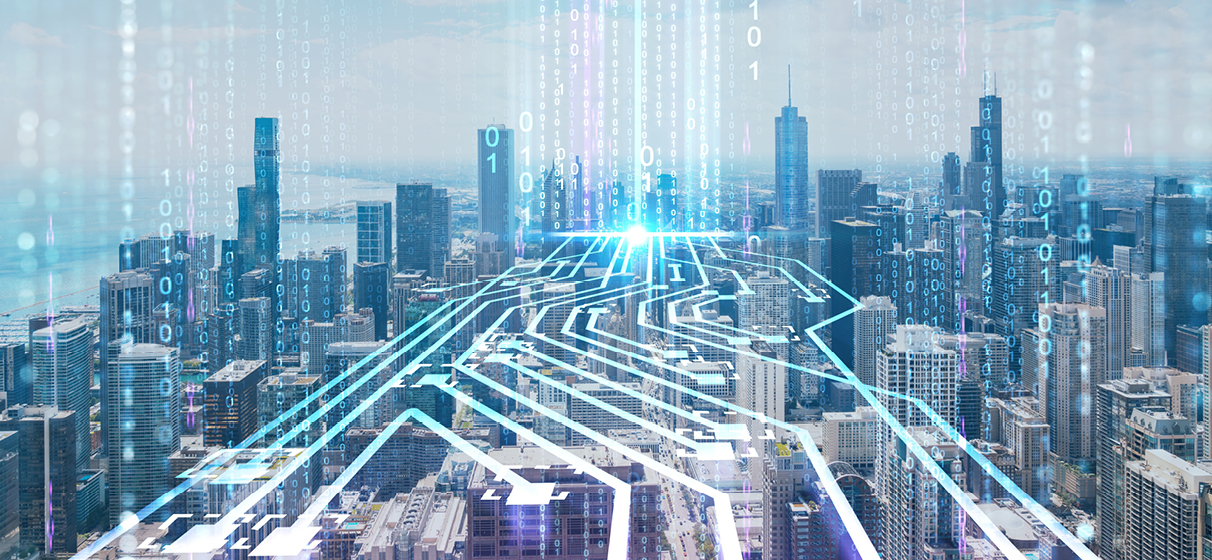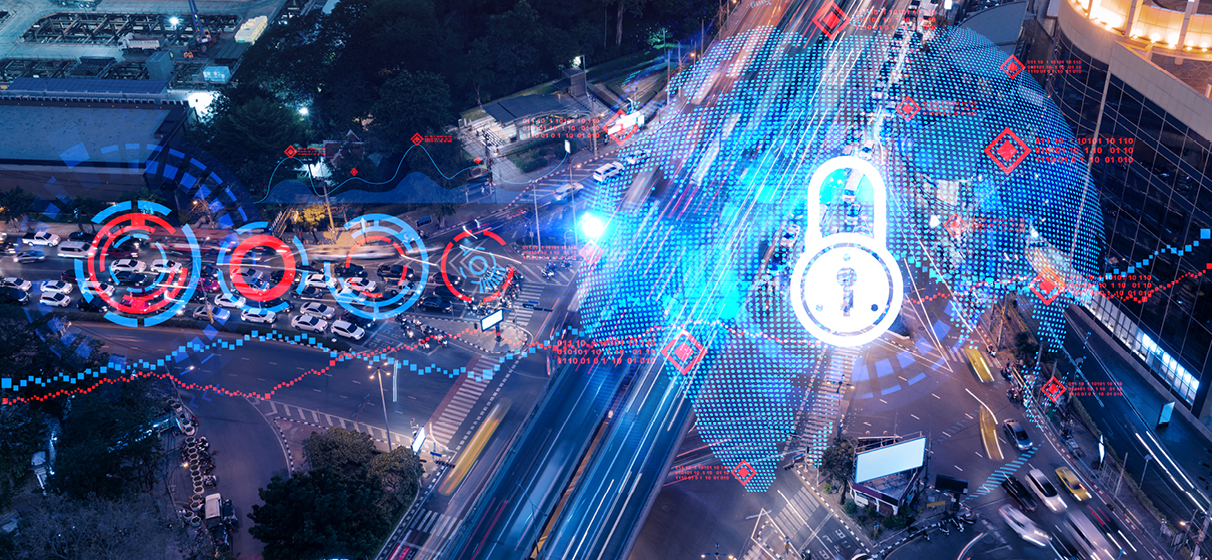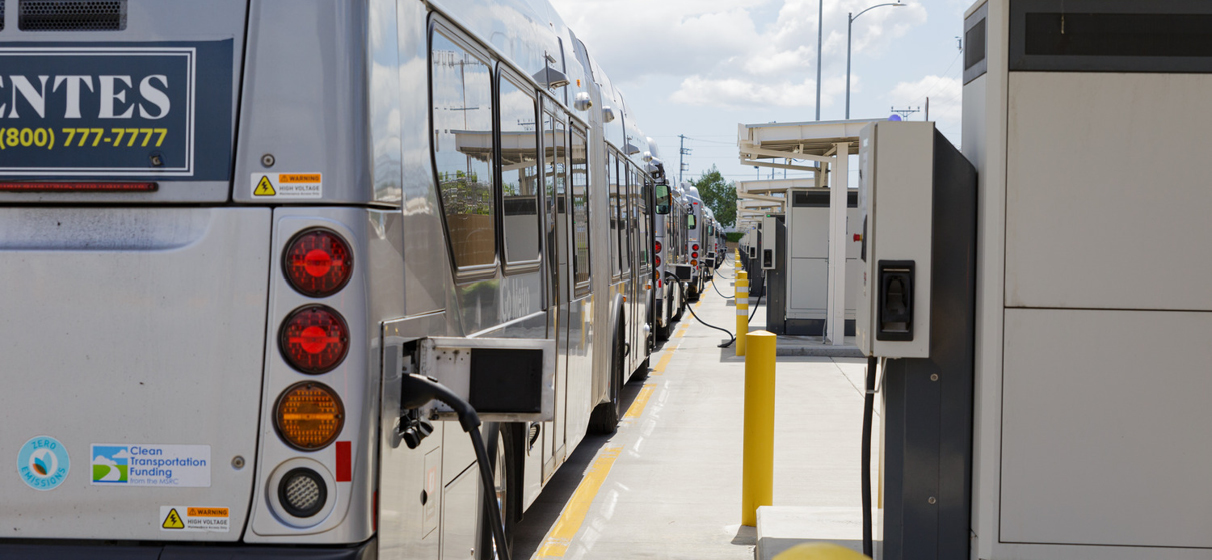The integration of AI and machine learning in public infrastructure is transforming how we manage and plan our urban landscape. During a recent Infraday Midwest panel, “Revolutionizing Public Infrastructure: The Impacts of AI and Machine Learning,” members of our digital advisory practice joined with clients and other industry partners to discuss the ways in which these technologies are reshaping city planning, infrastructure management, and public safety across the industry. From traffic analysis to asset management, AI has expanded exponentially in recent years, offering new tools that have the potential to redefine how cities operate and adapt.
A central theme of the conversation was the concept of digital ecosystems—interconnected platforms that allow cities to gather, analyze, and act on real-time data to improve planning and decision-making. With the rapid evolution of AI, municipalities now use digital advisory practices that draw from decades of industry knowledge to inform long-term planning efforts. For instance, transportation departments now utilize advanced AI to assess traffic movements, not only counting vehicles but analyzing patterns of pedestrian and vehicular behaviors across intersections. These insights help identify safety risks, such as pedestrians not using crosswalks or vehicles frequently engaging in risky maneuvers. By capturing this data through camera systems and sensors, cities can take proactive steps to reduce accidents, improve traffic flow and optimize infrastructure investments.
One notable development is the recent pilot program implemented by the Chicago Transit Authority, which leverages AI technology with the authority’s existing security camera system to specifically monitor for and alert security officials to brandished firearms. The goal of this pilot is to see how AI can enhance public safety and help law enforcement respond more effectively. As public safety becomes more data-driven, such use cases are likely to inspire broader applications of AI across other transportation and public safety networks.
At STV, one of the ways we are using AI is implementing predictive analytics for asset management. Public agencies often face the challenge of managing extensive networks of physical assets, from roadways and bridges to utility networks and public buildings. AI’s ability to analyze data, predict maintenance needs and forecast the lifecycle of an asset is proving invaluable, allowing for more strategic capital planning and budget allocation.
For example, our team recently leveraged predictive analytics for a college campus assessment to evaluate asset lifespans, identify deficiencies and prioritize budgetary allocations. By analyzing key indicators such as age, condition and usage patterns, AI can provide recommendations for maintenance schedules or replacement timelines, enabling agencies to manage assets more cost-effectively over time. These insights help avoid unexpected costs and interruptions, ensuring smoother operations and long-term sustainability.
Moreover, new AI tools, including reality capture and digital twin simulations, are further enhancing asset inspections. Techniques such as lidar scans capture highly detailed images of infrastructure elements, allowing engineers to monitor changes, like cracks in bridges, remotely. This digital reference not only provides an accurate record for future inspections but also reduces the risk of human oversight, reinforcing safety and efficiency in infrastructure management.
While AI and machine learning offer substantial benefits, the panel emphasized the importance of balancing these tools with human oversight. Data science and AI can provide exceptional insights, but there is a risk of over-reliance on technology. The panel noted that while AI can enhance decision-making, professionals need to critically evaluate data insights to ensure they reflect real-world conditions and context. This blend of human expertise and digital assistance is essential to delivering practical, actionable results.
The ethics and legal implications of AI also emerged as key considerations. As AI becomes deeply embedded in infrastructure and planning practices, issues such as data privacy, transparency, and security gain importance. Panelists cautioned against using AI for sensitive tasks without safeguards. For instance, using AI tools like ChatGPT for corporate reports could expose protected information, potentially compromising security and intellectual property.
Additionally, there is a growing demand for transparency in how AI applications are deployed and managed. As seen in the cautionary tale of a musician who gamed Spotify with AI-generated listeners, ethical concerns can arise around AI usage, even in unrelated industries. In infrastructure, ensuring AI is used responsibly and ethically is critical, particularly when public safety and resource allocation are at stake.
As our team continues to refine and expand how we leverage AI and machine learning, it’s important to understand that the journey to a fully AI-integrated infrastructure landscape must be approached with a balance of innovation and responsibility, ensuring that these powerful tools serve the public’s best interests and pave the way for smarter, safer and more resilient urban environments.









